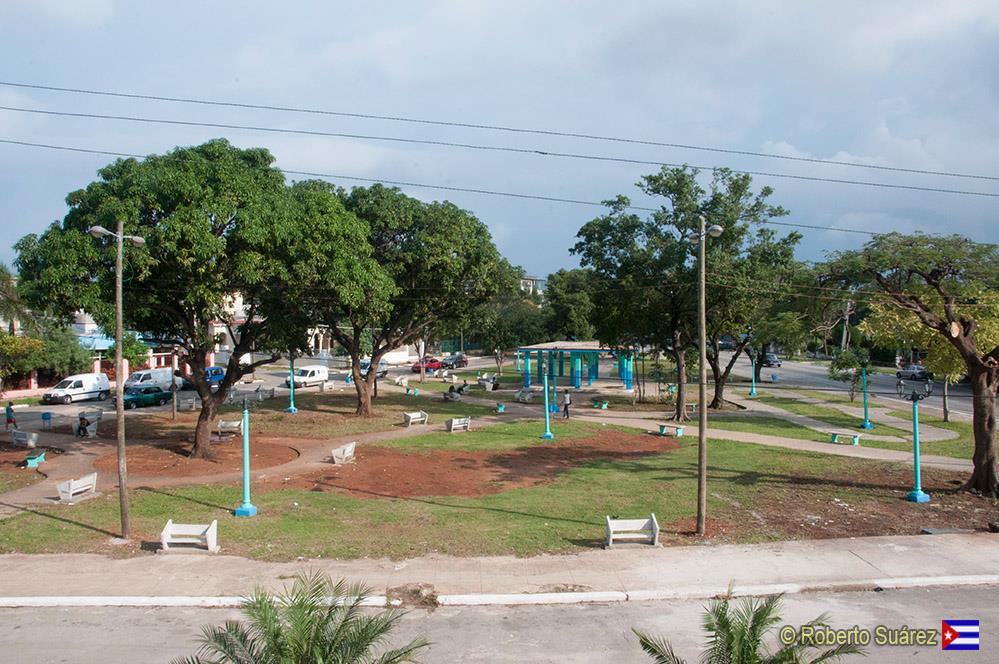![]() The Yayabo bridge, a colonial gem that defies time in Sancti Spiritus or the villa of the Holy Spirit is a colonial architectural jewel that continues as strong as in its beginnings. It beautiful bridge that is stands on the margins of the river Yayabo is the more old of Cuba and keeps numerous legends on its solid construction.
The Yayabo bridge, a colonial gem that defies time in Sancti Spiritus or the villa of the Holy Spirit is a colonial architectural jewel that continues as strong as in its beginnings. It beautiful bridge that is stands on the margins of the river Yayabo is the more old of Cuba and keeps numerous legends on its solid construction.
Nearly two centuries have passed since its opening in 1831. This work along with the main parish church and the main theatre are the three symbols that identify the province.
The myth of its construction
The Yayabo bridge has a height of 9 meters and its length is approximately 85 meters. Its perfection constructive dazzle to not few residents and visitors, Cuban or foreign, that are enchanted with the beauty of its five arches vaulted integrated by bricks of mud, and that possess a marked style Romanesque.
Legend, the strength of its structure due to tackles cow’s milk and blood of bull that was used to moisten the mixture of lime, sand and Italian cement brought specially to build this architectural beauty has.
However this story was disproved years ago, by the research of civil engineers. After several months of study and analysing several samples, the National Centre for conservation, restoration and Museology said in a technical report that in that construction was not used cement from Italy.
The reason of this myth is had surely to the denomination of “cement Roman” very used in that time and that was formed by a combination of lime, sand and pozzolana. Pozzolan is called volcanic rocks, bricks or tiles crushed to reduce them to a well fine powder.
True or not the legend, the truth is that this bridge continues there to challenge the passage of time. Once resisted the passage of quitrines and cars, today, still solid, supports heavy modern automobiles, because besides being a symbol, it is the main way to communicate to the beautiful city of Trinidad with the ports of Tayabacoa and Tunas de Zaza.
The bridge on the river Yayabo, deserved the condition of heritage national in 1995 not only by its fortress constructive, but also by its meaning popular. Numerous poets, musicians, painters and to love even it have as a source of inspiration required to feed the soul.
Agencies/Rad.Enciclopedia/Ruth Soto Falcón/Internet Photos/Arnoldo Varona/TheCubanHistory.com
THE CUBAN HISTORY, HOLLYWOOD.
![]() EL PUENTE YAYABO, SANCTI SPÍRITUS, UNA JOYA COLONIAL SOBREVIVE.
EL PUENTE YAYABO, SANCTI SPÍRITUS, UNA JOYA COLONIAL SOBREVIVE.
El Puente Yayabo, una joya colonial que desafía el tiempo En Sancti Spíritus o la villa del Espíritu Santo se encuentra una joya arquitectónica colonial que continúa tan firme como en sus inicios. El hermoso puente que se alza sobre las márgenes del río Yayabo es el más antiguo de Cuba y guarda numerosas leyendas sobre su sólida construcción.
Casi dos siglos han pasado desde su inauguración en 1831. Esta obra junto a la Iglesia Parroquial Mayor y el Teatro Principal constituyen los tres símbolos que identifican la provincia.
El mito de su construcción
El Puente Yayabo tiene una altura de 9 metros y su largo es de aproximadamente unos 85 metros. Su perfección constructiva deslumbra a no pocos pobladores y visitantes, cubanos o foráneos, que quedan hechizados con la hermosura de sus cinco arcos abovedados integrados por ladrillos de barro, y que poseen un marcado estilo románico.
Cuenta la leyenda, que la solidez de su estructura se debe a la leche de vaca espirituana y a la sangre de toro que se usó para humedecer la mezcla de cal, arena y cemento italiano traído especialmente para edificar esta belleza arquitectónica.
Sin embargo esta historia fue refutada hace unos años, por la investigación de ingenieros civiles. Luego de varios meses de estudio, y de haber analizado varias muestras, el Centro Nacional de Conservación, Restauración y Museología precisó en un informe técnico que en esa construcción no se empleó cemento de Italia.
La razón de este mito se debió seguramente a la denominación de “cemento romano” muy usado en aquella época y que estaba conformado por una combinación de cal, arena y puzolana. Se llama puzolana a las rocas volcánicas, ladrillos o tejas trituradas para reducirlas a un polvo bien fino.
Verdadera o no la leyenda, lo cierto es que este puente continúa ahí desafiando el paso del tiempo. Antaño resistió el paso de quitrines y coches, hoy, aún sólido, soporta los pesados automóviles modernos, porque además de ser un símbolo, es la vía principal para comunicar a la hermosa ciudad de Trinidad con los puertos de Tayabacoa y Tunas de Zaza.
El puente sobre el río Yayabo, mereció la condición de Patrimonio Nacional en 1995 no solo por su fortaleza constructiva, sino también por su significado popular. Numerosos poetas, músicos, pintores y hasta enamorados aún lo tienen como una fuente de inspiración necesaria para alimentar el alma.
Agencies/Rad.Enciclopedia/Ruth Soto Falcón/Internet Photos/Arnoldo Varona/TheCubanHistory.com
THE CUBAN HISTORY, HOLLYWOOD.








